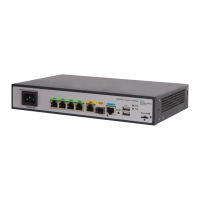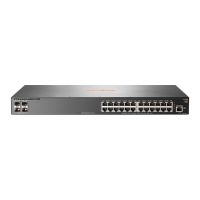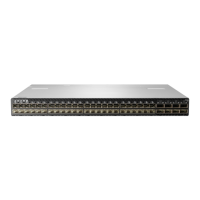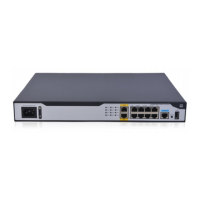340
Syntax
Centralized devices in standalone mode:
monitor process [ dumbtty ] [ iteration number ]
Distributed devices in standalone mode/centralized devices in IRF mode:
monitor process [ dumbtty ] [ iteration number ] [ slot slot-number [ cpu cpu-number ] ]
Distributed devices in IRF mode:
monitor process [ dumbtty ] [ iteration number ] [ chassis chassis-number slot slot-number [ cpu
cpu-number ] ]
Views
Any view
Predefined user roles
network-admin
Parameters
dumbtty: Specifies dumbtty mode. In this mode, the command displays process statistics in
descending order of CPU usage without refreshing statistics. If you do not specify this keyword, the
command displays statistics for the top 10 processes in descending order of CPU usage in an
interactive mode, and refreshes statistics every 5 seconds by default.
iteration number: Specifies the number of display times, in the range of 1 to 4294967295. If you
specify the dumbtty keyword, the number argument is 1 by default. If neither the dumbtty keyword
nor the number argument is specified, there is no limit to the display times and process statistics are
refreshed every 5 seconds.
slot slot-number: Specifies a card by its slot number. If you do not specify this option, the command
displays process statistics for the active MPU. (Distributed devices in standalone mode.)
slot slot-number: Specifies an IRF member device by its member ID. If you do not specify a member
device, this command displays information for the master device. (Centralized devices in IRF mode.)
chassis chassis-number slot slot-number: Specifies a card on an IRF member device. The
chassis-number argument represents the member ID of the IRF member device. The slot-number
argument represents the slot number of the card. If you do not specify a card, this command displays
information for the global active MPU. (Distributed devices in IRF mode.)
cpu cpu-number: Specifies a CPU by its number. (Centralized devices in IRF mode/distributed
devices in IRF or standalone mode.)
Usage guidelines
If you do not specify the dumbtty keyword, the command displays process statistics in an interactive
mode. In this mode, the system automatically determines the number of displayed processes
according to the screen size, and does not display exceeding processes. You can also input
interactive commands as shown in Table 74 to perform relevant operations.
Table 74 Interactive commands
? or h Displays help information that includes available interactive commands.
1
Displays state information for physical CPUs. For example, if you enter 1 for the first time,
the state of each
physical CPU is displayed in a separate row. If you enter 1 again, the
average value of all CPU states is displayed. If you enter 1 for the third time, separate
states are displayed.
By default, the average value of all CPU states is displayed.
c Sorts processes by CPU usage in descending order, which is the default setting.
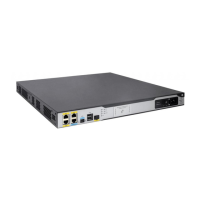
